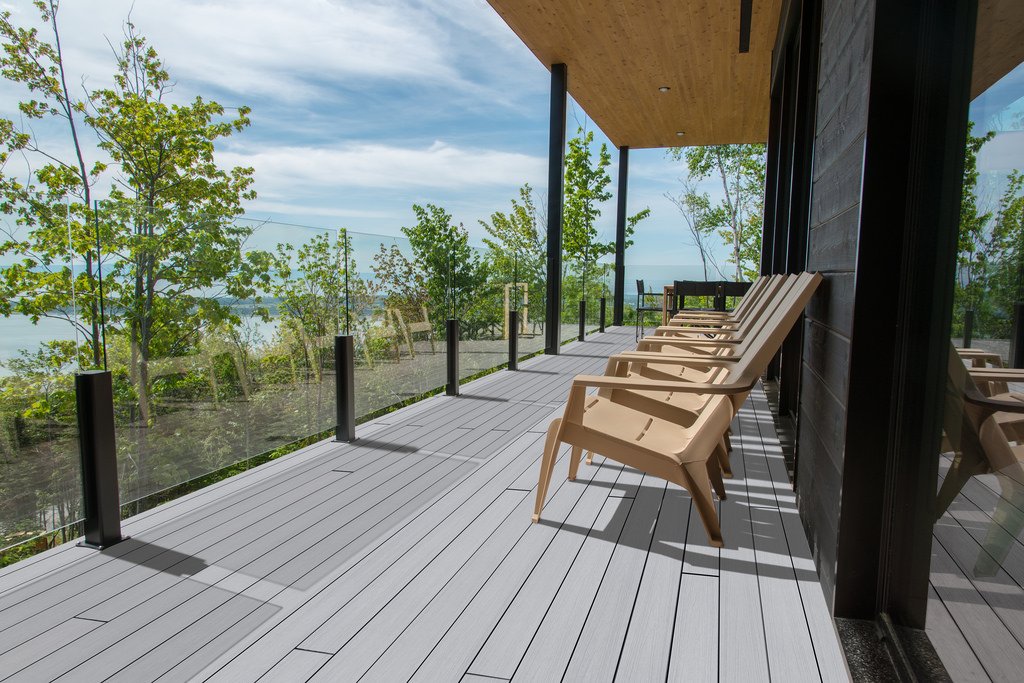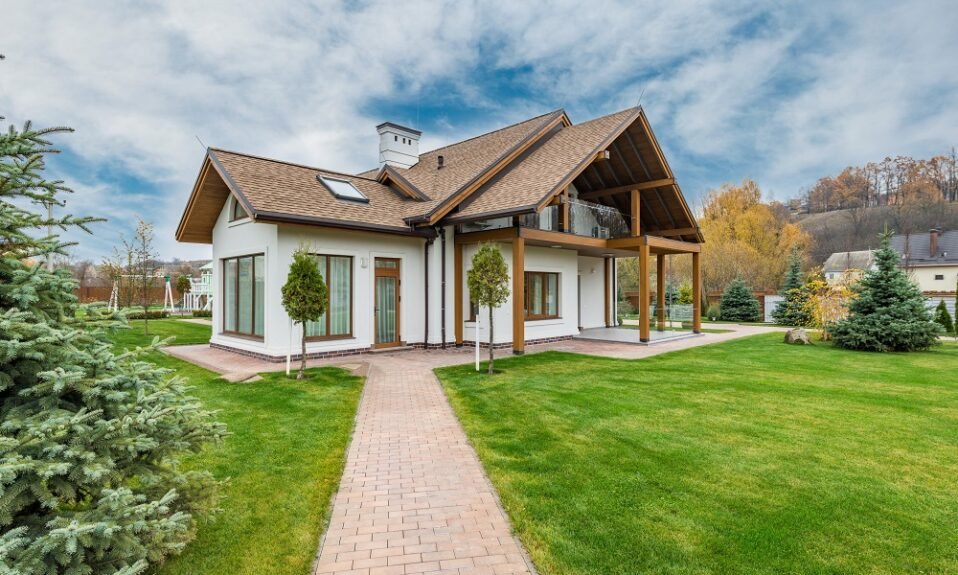
What is composite?
A composite is simply something that is made from a number of different materials. Similar to an alloy in the metal world. With composite decking, the best properties of both wood and plastic have been incorporated to give a superior product to use either of these materials on their own. In the case of composite decking, such as can be seen from Dino Decking, the wood provides rigidity, texture and a natural appearance while the plastic gives superior water-resistant properties, makes the boards anti-slip, increases the strength and flexibility while keeping it lightweight and significantly reduces the potential for the colour to fade over time.
No trees were harmed in the making of this deck

When working in the garden, it’s not always easy to think of ways to be environmentally friendly. By maintaining a garden at all, you are doing a great thing for wildlife by giving a home to small animals, insects and birds which can only be a good thing. You may also grow vegetables to be totally organic. Have a compost bin so you can recycle your waste. Maybe even a barrel to collect rainwater which you can use for watering the garden. All of these can have significant advantages for the local environment and the world as a whole. You may be surprised to know that composite decking is made almost entirely from recycled materials.
Real wood decking boards
The alternative to composite decking is using either softwood or hardwood, which as you would expect, are made from actual trees. Some wood is available from sustainably managed forests but it’s not always that easy to check whether this is the case. Sometimes a proportion of the wood is from a sustainable source which can be misleading when this is mentioned in the product literature. With hardwood decking, in particular, it is very difficult to produce this sustainably due to the long amount of time needed to grow trees of sufficient size to use in decking production. The common source of hardwood is from tropical forests which are already under immense pressure from deforestation logging and land clearance for farming.
Composite is totally recycled
There are no virgin wood products used in the manufacture of composite decking. The wood content primarily comes from recycled wood, offcuts and reclaimed sawdust. Not only does this stop a vast quantity of waste going into landfill, but it also reduces the number of trees being used to make decking. Similarly, with the plastic content, this also comes from recycled plastic. The source of this plastic is quite varied but includes a huge amount of household waste which would otherwise end up in landfill where it will sit for hundreds of years before starting to decompose. The plastic and wood materials are ground down into a powdery mix. They are then subjected to a combination of high heat and pressure to ensure a consistent blend before being extruded into the finished decking boards. There is extra energy consumption in this stage but this is insignificant compared to the positive impact of removing so much material from the landfill. Additionally, at the end of the composite deck’s life – which is an impressive 20-30 years, it can again be recycled to contribute to making the next generation of decks. So not only does composite decking prevent a quantity of plastic being discarded but won’t ever contribute to landfill capacity.
Chemicals can damage your garden.
The synthetic nature of the composite decking gives a very low margin of variation with the finished decking boards. However precise the cutting of wooden decking boards is, the variation in water absorbing capacity and natural tendency to expand and the warp will give less consistency when using real wood. To produce a wood product that will be long-lasting and more resistant to water, it is necessary to chemically treat the wood. Over time it is possible for the chemical treatments to leech out of the wood and into the garden environment. The constant exposure to moisture, as is found in the UK, makes this process happen much quicker.

A further environmental benefit of composite decking is the lack of maintenance that is required. There is always a preference to avoid synthetic industrial chemicals in gardens where they can contaminate the ground and have an impact on the quality of the soil. When installing a timber deck, after the initial sanding treatment there are a number of coats of wood-stain that is needed to be used. Wood-stains contain chemicals including polyurethane, varnish and petroleum distillate which are not particularly garden friendly. A benefit of composite decking is that no maintenance is required either at installation, or any time in the future. Therefore no unpleasant chemicals ever have to be introduced into the garden. Despite this, the decking will continue to maintain its colour, texture and quality for the lifetime of the installation. Should any damage ever occur to a board, you can simply replace it with a new piece which will have exactly the same colour, ensuring it blends in perfectly.




